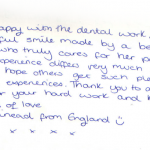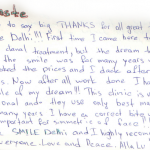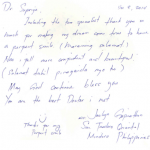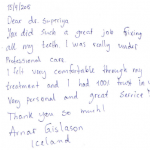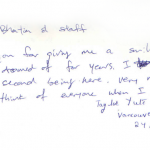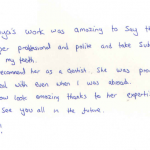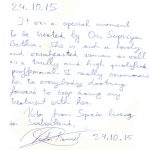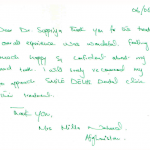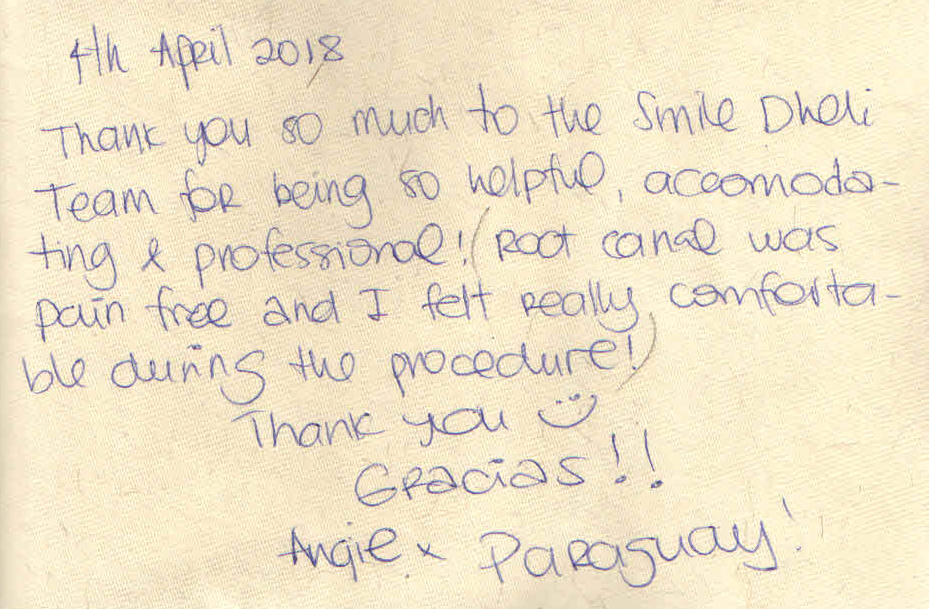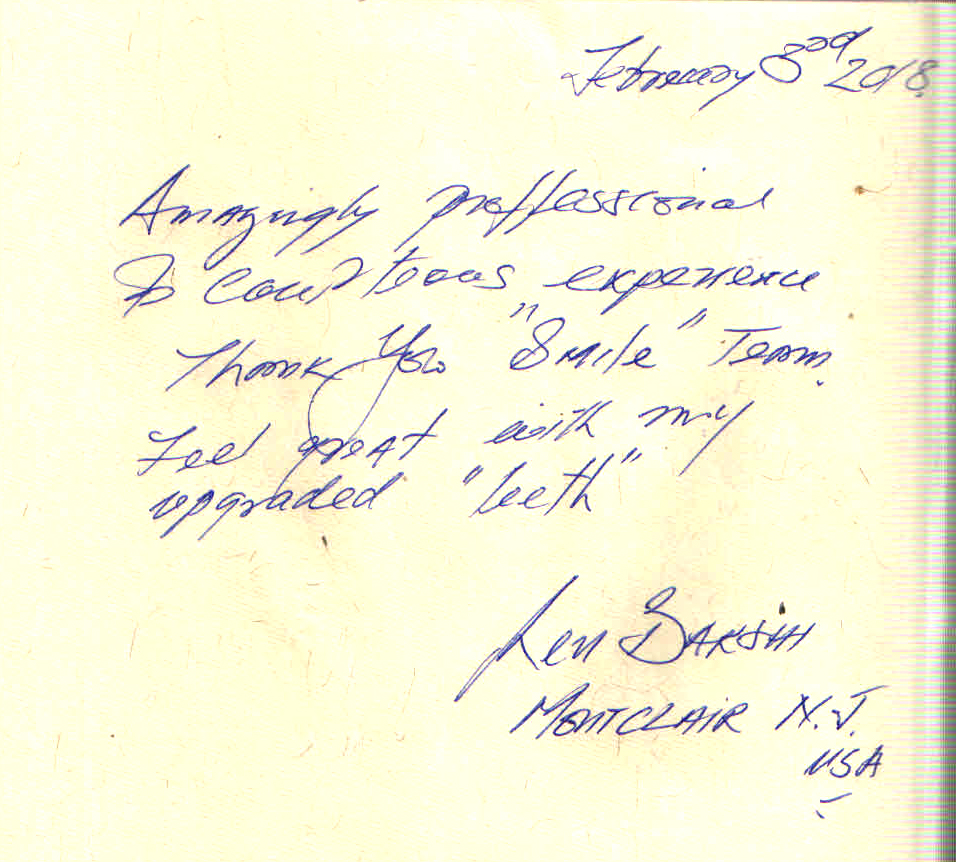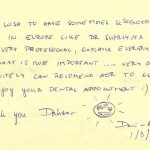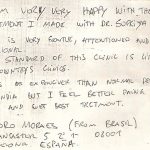Are your kids losing baby teeth before time?
People often don’t realize the importance of baby teeth. Some children lose their milk or baby teeth too soon.
Baby teeth normally stay in place to keep space available until permanent ones push them out and take their place to grow in healthily. When baby teeth are lost, it paves a way for permanent teeth to grow in.
Baby teeth are important because they:
- save and guard the area where the permanent tooth will erupt
- guide the permanent tooth into position
- help your child chew and speak
- encourage normal jawbone and facial muscle development
If a baby tooth is lost too early; knocked out in a fall, extracted because of severe decay or abscess or missing at birth, the permanent tooth can drift or erupt into the wrong position in the mouth; into the empty space instead of where they should be. Neighbouring teeth also can move into the space. This means that there may not be enough space for the permanent tooth to come in because of the lost space.
Obviously, the ideal space maintainer is the tooth itself. When this happens, the dentist may advise a space maintainer to ‘save’ the space for permanent teeth and prevent future orthodontic problems.
Space maintainers help “hold space” for permanent teeth left by the missing or removed tooth. Your child may need one, if he or she loses a baby tooth prematurely, before the permanent tooth is ready to erupt. It’s made to keep the remaining teeth steady, preventing movement (drifting or tipping) until the permanent tooth takes its natural position in the jaw.
Dentists in Delhi are making sure, that parents understand the importance of space maintainers for their children.
Whenever primary or permanent teeth are lost prematurely and arch integrity is lost, loss of space and arch length, perimeter, or circumference may result.
If untreated or if the space is not saved, the adjacent teeth (baby or permanent teeth) may drift into an incorrect position and the available space is may be reduced by an amount sufficient to cause your child’s permanent tooth to come in crookedly resulting in orthodontic issues like crowding in permanent dentition; poor dental hygiene, and even discomfort.
Dentists in India are counseling parents about the implications of premature loss of milk teeth. Hence, the importance of space maintainers is being understood.
Space maintainers are a lot more affordable than having to correct teeth back in place with more extensive orthodontic treatments. It’s unobtrusive and most children easily adjust to them after the first few days.
Just because a child’s milk teeth are bound to fall out eventually on their own, doesn’t mean parents can be less attentive to carrying out early oral health habits. Remember, some baby teeth are not replaced until a child is 12 or 14 years old.
Space maintainers can be there for a long time, but they are never permanent. They are typically removed when the new, permanent tooth begins to erupt or nearby abutment teeth become loose.
They are not always necessary. Not every tooth that is lost too early requires a space maintainer. If one of the four upper front baby teeth is lost early, the space will stay open on its own. If the permanent tooth is about to erupt, it may be decided not to use a space maintainer unless a child needs braces and space is a critical issue.
Once the dentist has determined a child requires a space maintainer, he or she will recommend one of a number of space holding appliances.
Many different types of appliances and treatment methods exist to manage space during childhood.
There are numerous types of space maintainers. They range from the very simple to those with numerous bands and wires. They can be constructed differently and used in different parts of the mouth.
A removable space maintainer, of course, can be removed. It uses artificial teeth or plastic blocks to fill in the space that needs to stay open. These type of space maintainers are normally used in visible areas only. It is not recommended for areas of high pressure like back molars. Removable space maintainers are normally only recommended for older, more responsible children. Examples of removable space maintainers which are being used in dental clinics in Delhi are Hawley’s appliance/ removable denture.
A fixed space maintainer is fixed (i.e., held) to a tooth or to more than one tooth. Fixation usually is done by cementing the space maintenance appliance in place. Examples of fixed space maintainers are band space maintainer, distal shoe space maintainer etc. Fixed space maintainers are being more commonly used than removable space maintainers in dental clinics in India as there is no compliance issue.
Space maintainers can be placed on both the lower or upper arch. For example, some space maintainers are used for missing anterior teeth and some are used to preserve space for posterior unerupted teeth.
Space maintainers help prevent or reduce the severity of malocclusion in the permanent dentition.
Nevertheless, all space maintainer appliances are plaque retentive and may predispose to dental caries and gingival inflammation. Space maintainer appliances may also impinge on the soft tissues, interfere with eruption of adjacent teeth, fracture, and become dislodged or lost.
The impending eruption of the permanent tooth for which the space is being maintained is an indication for appliance removal. Once desired eruption of the permanent tooth is achieved the space maintainer can be removed.
With the increasing awareness, preventive orthodontics including space maintenance is being practiced in reputed dental clinics in Delhi.
Caring for your Space Maintainer
The space maintainer may feel unusual at first. But after a few days, it will be forgotten about. A removable space maintainer with replacement teeth can affect speech until you become accustomed to it.
It’s important to brush regularly to keep the gum tissue healthy. Teeth should be brushed after each meal and clean the teeth with bands especially well.
Patients with a fixed space maintainer need to avoid hard or sticky foods and gum, which can loosen the band or get caught in the wire arm. Avoid pushing on the space maintainer as it could bend or come loose. If the space maintainer comes loose, there is a risk of swallowing it.
Maintenance of Space Maintainers
Patients must be evaluated at recall appointments to reassess the fit and stability of the appliance as well as the patient’s oral hygiene.
The degree of eruption of the permanent tooth for which the space is being maintained must also be assessed.
You should contact the dentist at the first sign of any looseness, change in the appliance, or complaint from the patient as untreated appliance failure may necessitate more complicated treatment in the future.
Indications of Space Maintainers
* The premature loss of primary molars may require the placement of a space maintainer to prevent the migration of the adjacent teeth, depending upon the teeth present and the arch length.
* When loss of a primary canine occurs, the dental arch midline may be compromised and the arch length also may be reduced. The premature loss of primary canines may therefore require the placement of a space maintaining appliance to prevent midline deviation and/or loss of arch length, perimeter and/or circumference.
* The premature loss of primary incisors does not usually require the placement of a dental appliance for the maintenance of space because mesial movement of the adjacent teeth is not generally expected.
Contraindications of Space Maintainers
* A space maintainer is usually not necessary if there is a sufficient amount of space present to allow for eruption of permanent tooth/teeth.
* A space maintainer may not be recommended if severe crowding exists, such that space maintenance is of minimal effect and subsequent orthodontic intervention is indicated.
* A space maintainer may not be necessary if the permanent tooth will be erupting soon.
Guidance of the eruption and development of the primary and permanent dentitions is an integral part of the care of pediatric patients.
Such guidance should contribute to the development of a permanent dentition that is in a harmonious, functional and esthetically acceptable occlusion.
Space management by careful supervision of a child’s developing jaws and teeth during the period of growth from infancy to adulthood is important. With appropriately timed maintenance of existing jaw space, the dentist may reduce or eliminate the need for future orthodontic treatment.
Preventive dentistry including preventive orthodontics is being practiced in dental clinics in India routinely.
Posted By – Dr. Shriya







